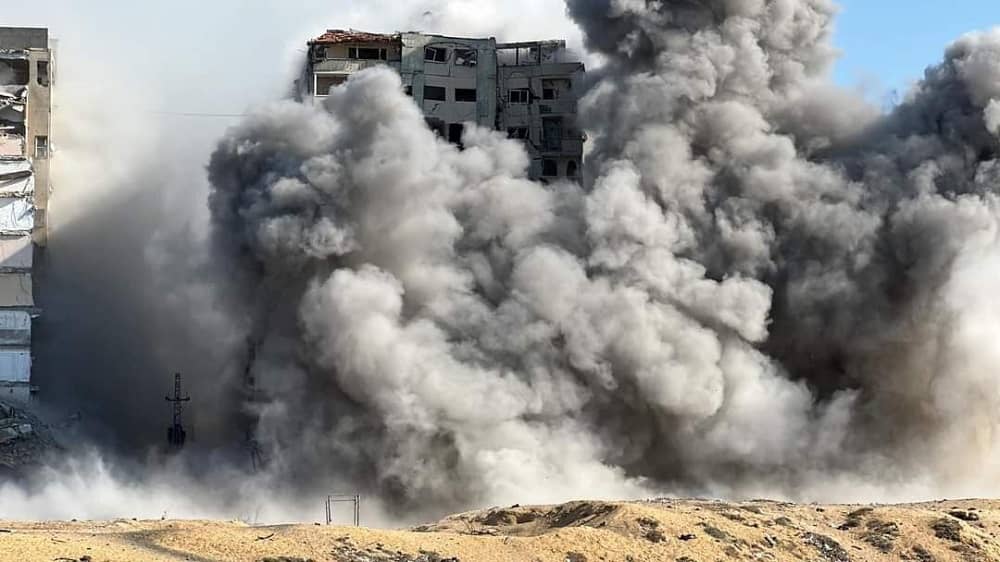
In the midst of the ongoing Gaza conflict, the actions of Iran’s Supreme Leader, Ali Khamenei, have attracted significant scrutiny. Despite calls for de-escalation, it is widely understood that Khamenei is orchestrating the conflict, using it as a tool to further his geopolitical agenda.
Domestic Distraction: Stifling Revolution
At a national level, Khamenei is exploiting the focus on the Middle East crisis to suppress internal dissent in Iran. This is being accomplished through a combination of increased executions, repressive laws, and bolstered domestic security measures. The aim is clear: to prevent the brewing of an imminent revolution in Iran by diverting attention and resources.
Political Consolidation: Gearing for Elections
Politically, the conflict serves as a means for Khamenei to resolve internal disputes and consolidate power ahead of crucial elections, including those for the Parliament and the Assembly of Experts. The latter is especially significant as it is linked to the succession of the Supreme Leader, indicating Khamenei’s long-term strategic planning.
Regional Pressure: Countering the Abraham Accords
Regionally, Khamenei’s objective is to exert influence over Arab nations, particularly Saudi Arabia. His goal is to weaken the Abraham Accords, a series of agreements that have challenged Iran’s standing in the Middle East.
International Ambitions: Challenging US Dominance
On an international front, Khamenei seeks to elevate Iran to a hegemonic position, challenging the United States, especially in the context of an upcoming election year in the U.S. This strategy includes a mix of aggressive rhetoric and assertive military posturing, reminiscent of tactics used in previous conflicts.
Twitter Diplomacy and Warnings
Khamenei’s active Twitter presence and the assertive statements from Iranian officials highlight a confident strategy, similar to past successful confrontations in the region. This includes issuing warnings to the United States, calling for a ceasefire in Gaza, and rallying support even from factions previously opposed to Khamenei.
#Iranian regime’s FM officially expresses ownership of the #Gaza crisis pic.twitter.com/MNrtiOovaG
— NCRI-FAC (@iran_policy) October 19, 2023
Avoiding Direct Conflict
Despite this aggressive posture, it is evident that Khamenei and the Iranian regime are not seeking direct war with the United States or Israel. Understanding the sentiments of the Iranian people towards their regime and its regional pursuits, Khamenei has maintained a stance of avoiding direct conflict, as evidenced by his declarations during heightened tensions with the US under President Donald Trump.
Leveraging Western Policy
Khamenei’s confidence is bolstered by four decades of Western policies oscillating between critical and constructive dialogue with Iran. This approach, which has often seen the West turn a blind eye to Iran’s increased oil sales and hostage-taking strategies, has only reinforced Khamenei’s belief in his regime’s invincibility.
The Facade of De-Escalation
Iran’s current stance on de-escalation is seen as a strategic move to gain an upper hand in the regional conflict, taking advantage of the West’s failure to hold the regime accountable.
Addressing the Iranian Regime as the Problem
The international community is urged to recognize the Iranian regime, particularly entities like the IRGC and Ministry of Intelligence, as major threats, rather than potential partners in resolving conflicts.
For years, the Iranian Resistance has emphasized the need for the expulsion of the mullahs’ regime from Arab countries.
From the outset, the mullahs’ rule and their survival have been based on two pillars: suppression of freedoms and repression inside #Iran, and terrorism,… pic.twitter.com/4x8ZM7Dkxg— Maryam Rajavi (@Maryam_Rajavi) November 6, 2023
Supporting Iran’s Resistance Movement
The ongoing resistance within Iran against Khamenei’s regime is noteworthy. Over the past five years, the Iranian people have shown resilience in their fight against tyranny, risking their lives in protests and skirmishes. It is suggested that the international community should support this resistance, marking it as a pivotal moment for global peace and security.
This analysis underscores the complex motivations and strategies employed by Iran’s Supreme Leader Ali Khamenei in navigating the current Gaza conflict and his broader regional and international ambitions.

MEK Iran (follow us on Twitter and Facebook), Maryam Rajavi’s on her site, Twitter & Facebook, NCRI (Twitter & Facebook), and People’s Mojahedin Organization of Iran – MEK IRAN – YouTu
